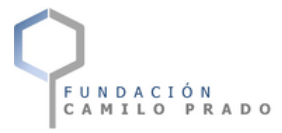Grades for glory? The impact of grade appeasement on business school teacher evaluations
DOI:
https://doi.org/10.35564/jmbe.2024.0017Keywords:
educational methodologies, student motivation, student preferences, professor evaluations, optimization, appeasement, business schoolAbstract
Educational institutions have had the pending task of knowing what really happens in their classrooms, which professors make a real difference, which students would need help to improve their performance, and even more importantly, how to manage the enormous amount of information gathered each year. To address this problem, in this paper we propose the use of retrospective data from 210 undergraduate courses in Spain, which equals 1,320 European credits, 10,500 students, and four complete academic years (18/19, 19/20, 20/21, 21/22) to generate a monitoring tool or automatic dashboard with which to try to optimize the operation of such institutions and help them to make (even more) optimal decisions. To do this, all courses were grouped into ten typologies or categories: (1) if they were 'soft skills'/'hard skills' courses, (2) if they were taught in the 1st, 2nd, 3rd or 4th academic year, (3) if the professor was male or female, (4) whether the course was taught in English or not, (5) whether the professor was internal and permanent staff of the university or an associate professor with a temporary contractual relationship with the institution, (6) whether his/her main professional activity was teaching, therefore being more academic-oriented or this was rather a hobby and a complementary professional activity, therefore being more practical-oriented, (7) their age, (8) if several professors shared the course or only one taught it, (9) if it was a semester or annual course, (10) and if it was taught during the Covid-19 period or outside of it. Our results show that, despite the existence of numerous types of methodologies to achieve the desired student motivation, there would only be one category that would generate significant differences in the grades of the students: if they were ‘soft skills’/’hard skills’ courses. However, on the contrary, there would be much more types of courses (and professors) which would affect the preferences and valuation of the student to the teaching received (and effectively paid by him/her). That is, despite reaching the same academic results, students do value one type of professors better than others. Likewise, through this work it is intended to demonstrate the non-existence of the "false belief" that better evaluations received by professors are since they give higher grades to their students, regardless of its dispersion. In this way, it is intended to prevent possible atypical behaviors by professors. Thus, this paper gives light to (re)consider which variables should actually matter in educational institutions, analyzing its teaching-learning processes, management and even the retention of its key players.
Downloads
References
Ali, I., Hamid, K., & Khan, M. A. (2010). A study of university students' motivation and its relationship with their academic performance. International Journal of Business and Management, 5(4), 80-88. https://doi.org/10.2139/ssrn.2899435
Beran, T., & Violato, C. (2005). Ratings of university teacher instruction: How much do student and course characteristics really matter?. Assessment & Evaluation in Higher Education, 30(6), 593-601. https://doi.org/10.1080/02602930500260688
Bigné, E., Badenes-Rocha, A., Ruiz, C., & Andreu, L. (2019). Development of a blended course for online teaching: process and outcomes. Journal of Management and Business Education, 2(2), 108-126. https://doi.org/10.35564/jmbe.2019.0010
Börner, K., Scrivner, O., Gallant, M., Ma, S., Liu, X., Chewning, K., ... & Evans, J. A. (2018). Skill discrepancies between research, education, and jobs reveal the critical need to supply soft skills for the data economy. Proceedings of the National Academy of Sciences, 115(50), 12630-12637. https://doi.org/10.1073/pnas.1804247115
Cagigal, J. L. (2016). Relaciones entre notas del alumno y evaluaciones al profesor. Revistapuce, 102, 169-198. https://doi.org/10.26807/revpuce.v0i102.10
Castedo, R., López, L. M., Ortega, M. F., Cabrera, J. D., García-Martínez, M. J., Sanchidrián, J. A., ... & Paredes, C. (2017). Aula invertida para la mejora del aprendizaje en la asignatura de Transferencia de Calor y Materia. In IV Congreso Internacional sobre Aprendizaje, Innovación y Competitividad (CINAIC 2017), pp. 231-236. https://doi.org/10.26754/CINAIC.2017.000001_048
Centra, J. A. (2009). Differences in responses to the student instructional report: Is it bias. Princeton, NJ: Educational Testing Service. https://citeseerx.ist.psu.edu/document?repid=rep1&type=pdf&doi=4145fb9109ac090cd280e0bb59d24b266c602071
Chell, E., & Athayde, R. (2011). Planning for uncertainty: soft skills, hard skills and innovation. Reflective Practice, 12(5), 615-628. https://doi.org/10.1080/14623943.2011.601561
Choudhary, H., & Pandita, D. (2023). Maximizing learning outcomes in the digital age: the role of microlearning for Gen Z. Development and Learning in Organizations: An International Journal. https://doi.org/10.1108/DLO-02-2023-0038
Dev, P. C. (1997). Intrinsic motivation and academic achievement: What does their relationship imply for the classroom teacher? Remedial and Special Education, 18(1), 12-19. https://doi.org/10.1177/074193259701800104
Díaz-Silva, L. A. (2018). Diseño y aplicación de una estrategia de lectura “Procedimientos Lógicos Básicos” para mejorar la comprensión lectora de textos escritos en el Área de Comunicación del tercer grado de educación secundaria de la Institución Educativa El Cumbe-Provincia de Cutervo. Universidad nacional de educación Enrique Guzmán y Valle. Retrieved from https://repositorio.une.edu.pe/handle/20.500.14039/3429 [accessed on 25 April 2023]
Fernández-Moya, M., Cuadros, P. J., Salvador, C., & Pinar J. M. (2020). The Montessori method in university teaching. In INTED2020 Proceedings, pp. 3861-3864. https://doi.org/10.21125/inted.2020.1079
Ferrer-Torregrosa, J., Jiménez-Rodríguez, M. Á., Torralba-Estelles, J., Garzón-Farinós, F., Pérez-Bermejo, M., & Fernández-Ehrling, N. (2016). Distance learning ECTS and flipped classroom in the anatomy learning: comparative study of the use of augmented reality, video and notes. BMC Medical Education, 16(1), 1-9. https://doi.org/10.1186/s12909-016-0757-3
Google (2019). Generation Y and Z: characteristics and differences. Retrieved from https://www.thinkwithgoogle.com/intl/es-es/insights/tendencias-de-consumo/generaciones-y-y-generacion-z-en-que-se-diferencian-y-como-captar-su-atencion/ [accessed on 5 August 2023]
Heffernan, T. (2022). Sexism, racism, prejudice, and bias: A literature review and synthesis of research surrounding student evaluations of courses and teaching. Assessment & Evaluation in Higher Education, 47(1), 144-154. https://doi.org/10.1080/02602938.2021.1888075
Hendarman, A. F., & Cantner, U. (2018). Soft skills, hard skills, and individual innovativeness. Eurasian Business Review, 8(2), 139-169. https://doi.org/10.1007/s40821-017-0076-6
Huitt, W. (2001). Motivation to learn: An overview. Educational Psychology Interactive. Valdosta, GA: Valdosta State University. Retrieved from http://www.edpsycinteractive.org/topics/motivation/motivate.html [accessed on 14 May 2023]
Hutton, J. S., Dudley, J., Horowitz-Kraus, T., DeWitt, T., & Holland, S. K. (2020). Associations between screen-based media use and brain white matter integrity in preschool-aged children. JAMA Pediatrics, 174(1), e193869-e193869. https://doi.org/10.1001/jamapediatrics.2019.3869
Izagirre-Olaizola, J., Morandeira-Arca, J., Mitxeo-Grajirena, J., Mendizabal-Zubeldia, A., & Lertxundi-Lertxundi, A. (2020). Reinforcing the involvement of students in learning business economics through active methodologies and student response systems. Journal of Management and Business Education, 3(1), 29-46. https://doi.org/10.35564/jmbe.2020.0004
Jurayev, T. N. (2023). The use of mobile learning applications in higher education institutes. Advances in Mobile Learning Educational Research, 3(1), 610-620. https://doi.org/10.25082/AMLER.2023.01.010
Manninen, M., & Yli-Piipari, S. (2021). Ten practical strategies to motivate students in physical education: Psychological need-support approach. Strategies, 34(2), 24-30. https://doi.org/10.1080/08924562.2020.1867270
Mateos-Ronco, A., Lajara-Camilleri, N., & Marín Sánchez, M. (2011). Sistema de evaluación en contabilidad y resultados. Retrieved from http://web.ua.es/es/ice/jornadas-redes-2011/documentos/posters/185422.pdf [accessed on 29 July 2023]
Montessori, M. (1912). The Montessori Method. New York, NY: Frederick A. Stokes Company. Retrieved from https://books.google.es/books/about/The_Montessori_Method.html?id=4F4WAAAAIAAJ&redir_esc=y [accessed on 10 May 2023]
Morris, L. S., Grehl, M. M., Rutter, S. B., Mehta, M., & Westwater, M. L. (2022). On what motivates us: a detailed review of intrinsic v. extrinsic motivation. Psychological medicine, 1-16. https://doi.org/10.1017/S0033291722001611
Pinar-Pérez, J. M., Morales-Arsenal, R., Fernandez-Moya, M., Cuadros-Solas, P., & Salvador, C. (2021). Mitigating deficiencies of generation Z through new educational methodologies in a business statistic course. In Proceedings INNODOCT/20. International Conference on Innovation, Documentation and Education, pp. 81-88. https://doi.org/10.4995/INN2020.2020.11821
Ravshanbek, J. (2022). Credit-module system, its basic principles and features. Yosh Tadqiqotchi Jurnali, 1(4), 304-309. https://doi.org/10.5281/zenodo.6582173
Rosen, A. S. (2018). Correlations, trends and potential biases among publicly accessible web-based student evaluations of teaching: a large-scale study of RateMyProfessors. com data. Assessment & Evaluation in Higher Education, 43(1), 31-44. https://doi.org/10.1080/02602938.2016.1276155
Ryan, R. M., & Deci, E. L. (2020). Intrinsic and extrinsic motivation from a self-determination theory perspective: Definitions, theory, practices, and future directions. Contemporary educational psychology, 61, 101860. https://doi.org/10.1016/j.cedpsych.2020.101860
Sabot, R., & Wakeman-Linn, J. (1991). Grade inflation and course choice. Journal of Economic Perspectives, 5(1), 159-170. https://doi.org/10.1257/jep.5.1.159
Silva, R., Rodrigues, R., & Leal, C. (2020). Student learning motivations in the field of management with (and without) gamification. Journal of Management and Business Education, 3(1), 47-71. https://doi.org/10.35564/jmbe.2020.0005
Stark, P., & Freishtat, R. (2014). An evaluation of course evaluations. ScienceOpen Research. https://doi.org/10.14293/S2199-1006.1.SOR-EDU.AOFRQA.v1
Strello, A., Strietholt, R., Steinmann, I., & Siepmann, C. (2021). Early tracking and different types of inequalities in achievement: Difference-in-differences evidence from 20 years of large-scale assessments. Educational Assessment, Evaluation and Accountability, 33, 139-167. https://doi.org/10.1007/s11092-020-09346-4
Stroebe, W. (2020). Student evaluations of teaching encourages poor teaching and contributes to grade inflation: A theoretical and empirical analysis. Basic and Applied Social Psychology, 42(4), 276-294. https://doi.org/10.1080/01973533.2020.1756817
Uttl, B., & Smibert, D. (2017). Student evaluations of teaching: teaching quantitative courses can be hazardous to one’s career. PeerJ, 5, e3299. https://doi.org/10.7717/peerj.3299
Villagrasa, J., Buyl, T., & Escribá-Esteve, A. (2018). CEO satisfaction and intended strategic changes: The moderating role of performance cues. Long Range Planning, 51(6), 894-910. https://doi.org/10.1016/j.lrp.2017.12.002Villagrasa, J., Donaldson, C., & López, C. (2022). Twitter as a tool to monitor attitudes: The strategic usage of social media. Journal of Management and Business Education, 5(4), 392-423. https://doi.org/10.35564/jmbe.2022.0023
Villagrasa, J., Escribá-Esteve, A., & Donaldson, C. (2024). How can complacency mold managerial decisions? The role of perceptions in strategic decision-making. Corporate Governance and Organizational Behavior Review, 8(2), 212–231. https://doi.org/10.22495/cgobrv8i2p21
Wats, M., & Wats, R. K. (2009). Developing soft skills in students. International Journal of Learning, 15(12). https://doi.org/10.18848/1447-9494/CGP/V15I12/46032
Wilson, S. (2022). Student perception of learning versus performance in project management education. Journal of Management and Business Education, 5(1), 48-62. https://doi.org/10.35564/jmbe.2022.0004
Winquist, J. R., & Carlson, K. A. (2014). Flipped statistics class results: Better performance than lecture over one year later. Journal of Statistics Education, 22(3), 1-10. https://doi.org/10.1080/10691898.2014.11889717

Downloads
Published
How to Cite
Issue
Section
License
Copyright (c) 2024 Journal of Management and Business Education

This work is licensed under a Creative Commons Attribution-NonCommercial-ShareAlike 4.0 International License.
License terms at: https://creativecommons.org/licenses/by-nc/4.0/legalcode



